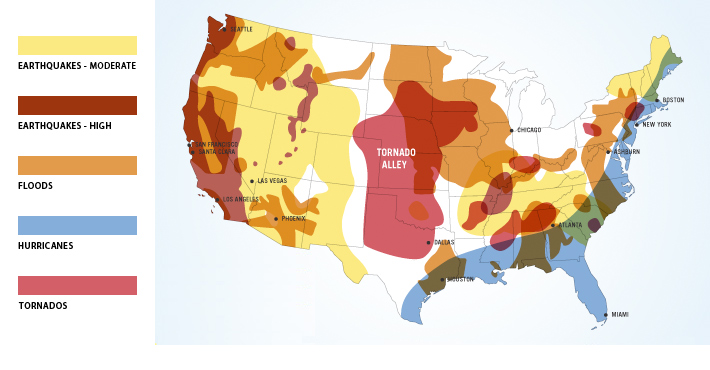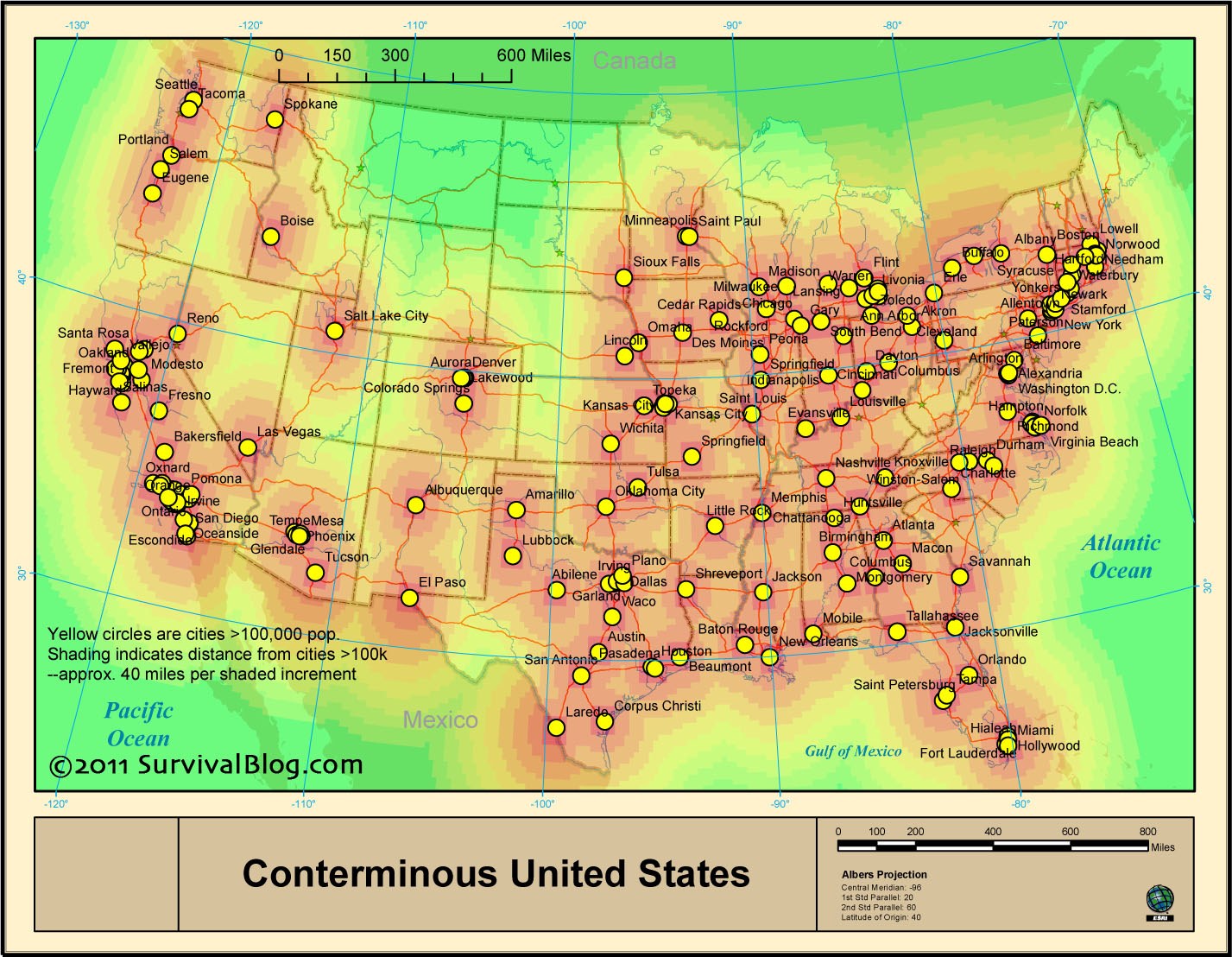By now, each of you are keenly aware of the different disasters that could affect our way of life. Some of these disasters even have the capacity to cause widespread destruction, panic and suffering. Given the pandemonium that would ensue in the more populated areas of our country, some of us are ready to take the necessary steps to be more self-reliant.
As a result, many are selling their suburban and urban dwellings to move to more rural settings to start their survival retreats. Preparing your home to be a survival retreat allows you to stock more supplies, and be more prepared for longer-term emergencies. This resource, by M.D. Creekmore has excellent book reviews and shows readers how to build a survival retreat on a low budget.
Deciding exactly where to relocate is not an exact science. You can gauge the potential threat and plan accordingly, but you can never be completely certain what will happen and where the safest place will be. However, knowing that you have researched and prepared the best retreat possible puts you at a far greater advantage than many others.
Location and land characteristics are crucial factors when a person is considering purchasing land for a survival retreat. According to James Rawles, author of How to Survive the End of the World As We Know It, the decision to have a survival retreat should be a “well-prepared and defensible redoubt with well-planned logistics.”
Experts agree on the fact that the area we should choose for a retreat property needs to be a semi-isolated location with steady water supply and a fair amount of timber for heat in a woodstove/fireplace. If we find ourselves in a grid-down scenario, we want to be able to support our basic needs. These will be the top priorities in the beginning.
While walking the property note what resources and obstacles your site has before you make a plan. Keep in mind that you want to find a property that can be sustainable. Ask yourself questions such as:
- “What’s there that you can use? Trees, bamboo, stones, sand, soil, clay…?
- Is there plenty of wood or coal for fire?
- Is there a natural water supply?
- Can you work with those materials? Can you learn to?
- Can the retreat property be seen from the road?
- Is there a major highway nearby?
- Can you protect your land, if attacked?
Keeping these questions in mind will help you determine whether the property is appropriate for surviving long-term disasters.
Climate is another consideration. Although many believe that living in the warm climates of the south will be an ideal area for retreats, keep in mind that most southern states are susceptible to damage brought on by hurricanes, tropical storms and flooding. As you can see from the map below, most our states are exposed to one or more climatic issues. Therefore, keep this in mind when determining where you want to set your retreat up.

- Map provided by Redcross.org and Noaa.gov
Another aspect to factor in is whether any major cities are in your desired retreat area. Ideally, you want to choose an area that has low population density. If a major disaster occurs, living in a more isolated area (especially from major highways) will help to protect your from transient mobs leaving the cities. You don’t want to be on the lines of drift from major cities, as towns along these roads will be hit hard by hordes of people, some of whom might not be friendly. See the map below to view the major cities of the United States.

- U.S. Major Cities
Some other important factors to consider are:
- A long growing season
- Property backs up to a state or national park
- Low population density and away major cities and suburban developments
- Sufficient year-round precipitation and surface water
- Rich topsoil
- Sunny area for solar panels
- No major earthquake, hurricane, or tornado risks
- No flooding risk
- No tidal-wave (at least two hundred feet above sea level)
- Minimal forest-fire risk
- Away from interstate freeways and other channelized areas
- What type of employment is in the area
- A diverse economy and agriculture
- Low taxes
- Non-intrusive scale of government
- Favorable zoning and inexpensive building permits
- Minimal gun laws
- A lifestyle geared toward self-sufficiency
- Plentiful local sources of wood or coal
- No restrictions on keeping livestock
- Defensible terrain
- Not near a prison or large mental institution
- Inexpensive insurance rates (home, auto, health)
- Upwind and away from major nuclear power plants
Consider searching within an active farming area. This is beneficial because the barter systems are already in place, not to mention an abundance of livestock and produce.
When thinking about where you’d prefer to buy your retreat and/or retirement home, look at all the factors and whether the piece of land can sustain you and your family’s needs.
Use this mapping tool to:
- Look into if there are any underground aquifers in the area
- If there are any environmental or climatic issues in the area
- Maps the vegetation growth in the area
Further Reading:
http://survivalblog.com/retreatareas.html
http://modernsurvivalblog.com/retreat-living/best-place-to-live-with-a-survival-context/
Preps to Buy:
- Topographic and geographic maps of the area
- Farmer’s Almanac to find out growing season
Action Items:
- Research! Compare counties that you are interested in moving to.
- Look into the local governments and what local laws are in place.
- Research websites like www.city-data.com to see what the statistics are for the location you are considering.
- Find out the condition of the soil.
- Determine if there is a barter system.
- To learn more about understanding the principles of a retreat, consider reading this page from Survival Blog.
This article was originally published at Ready Nutrition™ on April 27th, 2012







Looking at the natural disaster map above, I am glad that I am in Michigan!
You need to look beyond the areas of natural disaster. For example the jet stream plays an important part in our weather.
Also consider such events as Yellowstone national park erupting. The volcanic ash will cover the entire eastern seaboard. Plan your evac routes